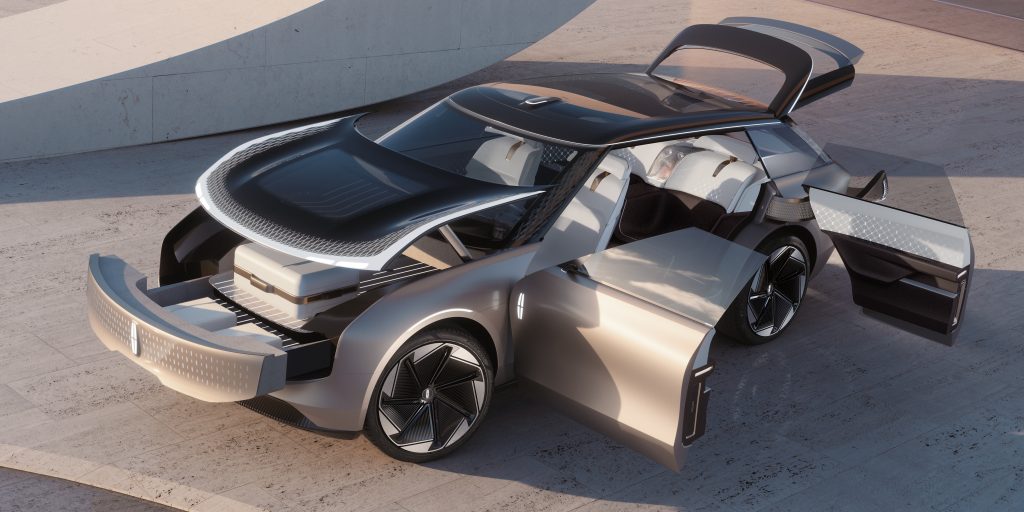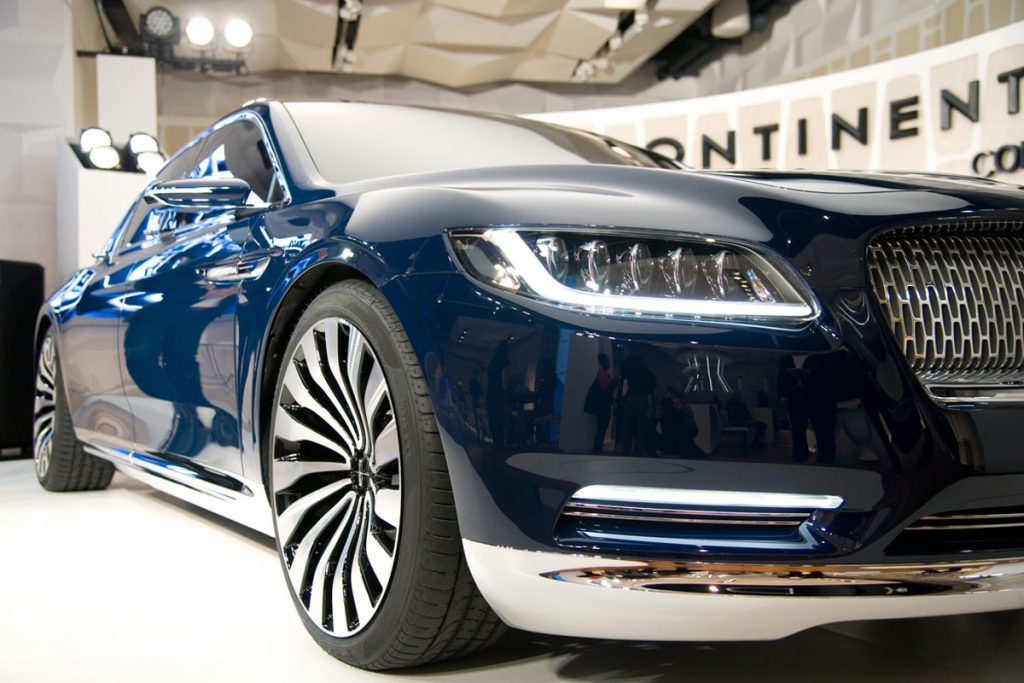The Lincoln Star Concept Illuminates The Brand’s Direction For Electric Vehicles
A Centennial Celebration Honors Its Heritage Of Innovation And Sets Its Vision For the Future

The Lincoln Star Concept reinvigorates the road ahead for Lincoln, its dealers and its clients. New definitions and interpretations of luxury need to be created to seize this unique moment in automotive design, and the ability to form exterior shapes with new stamping technologies and design without the constraints of combustion engines and their bulky drivetrains offers enormous innovation and increased usability for people. Relying on the last fifty years of “luxury” design with its leather seats and wood trim is not where we see the future going, and not what we think clients are looking for; we’re hoping that the way people live with the objects in their home heavily influences designers to push through to more sustainable materials and more stylish, functional environments. It’s an exciting time in automotive design, and we’re happy that Lincoln is expressing its informed take on the next generation of all-electric vehicles.

The iconic American luxury brand was founded in 1922 and, as part of its centennial celebration, quietly debuted its Star Concept car at NeueHouse Hollywood and simultaneously virtually online in China. Leaning into its Quiet Flight positioning, the brand successfully communicated two messages: it’s leveraging a 100-year-old legacy of innovation and design to clearly communicate the vision of its connected electric vehicles—it will introduce three new electric models by 2025, a fourth by 2026 and will be fully electric by 2030; and recognizing that China is not only its largest market, it is also moving the brand to a globally inspired design direction. “We want you to feel like you’re on vacation in this car. We applied design principles from past decades without resurrecting the past. We’re always looking toward the future,” says Kemal Curic, Lincoln’s Design Director. Fueled by its best annual sales results in 21 years driven by a substantial increase in China, Lincoln is regaining traction in delivering its vision of American luxury to a larger, global market.

A week earlier, Lincoln invited us to its archives in Dearborn, Michigan, where it presented vehicles, documents, samples and photos noting important milestones in its 100-year journey. Highlighting its engineering achievements and design innovations, classics on display included the streamlined 1936 Lincoln Zephyr, the brand’s first mass-produced car; the 1941 Lincoln Continental Cabriolet, which brought grand touring vibes stateside; the chic 1956 Continental Mark II was the most expensive American car in its time; the Designer Series collaborations in the Seventies partnered with icons of design including Bill Blass, Cartier, Pucci and Givenchy; their defining step into the luxury SUV space with the 1997 Navigator (which has sold nearly half a million units to date and an all is an all-new model for 2022).

The Lincoln Star Concept—named after the brand’s star logo—defines Lincoln’s design intentions for its first generation of all-electric cars. While a concept car, we’re likely to see something very similar debut soon based on the brand’s past concept reveals. If that’s the case, then the future for Lincoln’s design language is a bold, welcome step forward. From its materials—metallic 3-D printed latticed pillars, electro-chromatic glass—to its athletically sloped front with new storage spaces, such as an extending drawer for luggage, smoother exterior, luxurious interior space and an iconic new lounging tailgate—to its extensive use of lighting, sound and scent—it’s clear that the design team is making bigger moves given the opportunity to do so. “You have a flat floor and you can reimagine the interior and build the car from the inside out… It needs to capture beauty first and captivate you from the interior. It needs to be something so functional, but at the same time beautiful. So that’s the way we thought about it. First think about the experiences. What do you want this product to evoke?” Says Curic.

After walking us through the car, Robert Gelardi, Lincoln’s Chief Interior Designer, says “You can see this coast to coast display, and you can see how all of the digital content moves through the vehicle. We really designed this from the inside out as you can tell. Reimagining what the liftgate can be, you see the floor goes on unencumbered from the floating instrument panel all the way into the frunk. It’s a full length interior. It’s instantly recognizable as a BEV [battery electric vehicle] when you walk up to it. The electro-chromatic glass in the hood lets the light in when you’re moving, giving you more of a sense of the full interior space, but when you park it goes down to opaque so nobody can see what you’ve got inside.” Generous coach doors reveal two rather than three rows, creating a spacious, more premium interior. The two rear seats ensure passengers (many of whom will be driven, especially those in China) have plenty of space to relax or work. There’s storage under the seats—convenient for shoes or slippers—and even a refrigerated space for beverages.

A focus on lighting, which Earl Lucas, Lincoln’s Chief Exterior Designer, says is “an essential element” of design for electric luxury vehicles, where animations, colors and sequences can all come into play to contribute to a vehicle’s personality, appearance and experience. Intelligent lighting displays on the front and back of the vehicle contribute to “design that transcends space and time for a sense of peace and serenity,” he adds. When sound and scent are added even more senses come into play. Our body’s innate circadian rhythm at different times throughout the day—similar to your Apple laptop adjusting brightness and hues during the day—Lincoln’s multi-sensory design delivers three distinct moods within the cabin by harmonizing scent, sight and sound. “The customer feels embraced by the car. “Elegant lighting communicates the car is excited to see them, welcoming them into the space,” he continues.

It’s going to be a busy few years of new model announcements and subsequent releases, and we look forward to sharing them with you as they come.
Hero image by Evan Orensten, all others courtesy of Lincoln












